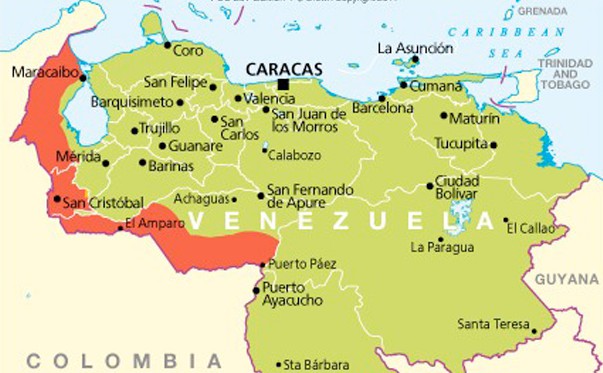 With Katie Jacoby’s taxi basics, you’ll never be lost for words in a cab again
With Katie Jacoby’s taxi basics, you’ll never be lost for words in a cab again
Taxi? Bike? Car? TransMilenio? Buseta? SITP? Walk? Or give it all up and just stay in? Figuring out how to get from point A to point B in a city as big as Bogota can be overwhelming – but at least you don’t need to speak much Spanish to do so. Except with a taxi, that is.
There’s no need to worry, though – this quick guide will prepare you to take a taxi anywhere you want with aplomb.
Let’s start with the basics: If you’re not sure if a taxi is free, ask ¿está libre?
When you first get in the taxi, it’s a nice gesture to say buenos días, ¿cómo está? To then give your destination, say, para + address. So, para la 26 con Caracas, por favor. You can also say, lléveme. Por favor, lléveme a la biblioteca Luis Ángel Arango. If the taxi driver asks you first, he’ll say ¿Para dónde va? Rather, he or she will say – although I think I’ve only had two female taxi drivers in my three years here.
As it could affect the last part of the route, the taxi driver might ask you what side of the street you need to be dropped off on. They might do this by referring to the flow of traffic, for which they’ll use the word sentido. On a carrera, it will either be the sentido norte-sur (that is, the right side of the street, if you’re facing south) or the sentido sur-norte (right side of the street if you’re facing north). On a calle, it could be the sentido oriente-occidente or the sentido occidente-oriente. Or, they might just ask which side. Side is lado, but in this context costado is more common. ¿Por qué costado de la 72? Which side of the street?
The taxi driver might also ask you if you prefer a certain route. ¿Por dónde vamos? Or, ¿Por dónde cogemos? You can say, la ruta menos congestionada, la ruta más rápida, or, no, escoja, usted es el que sabe.
General words that are always useful include semáforo (traffic light), esquina (corner), puente (bridge), andén (sidewalk), and trancón (traffic/traffic jam).
Now for some vital elements inside the taxi: the all-important box is the taxi meter, conveniently called the taxímetro in Spanish.
Sometimes drivers don’t turn it on right away, so make sure you say, ¿Podría prender el taxímetro, por favor?
 Another key item is the fare card. This is called the tarjetón or tabla. Here you’ll find the fares that correspond to the taxi meter numbers, and at the bottom in tiny print you’ll see the surcharges. These are called recargos. Probably the most common ones are the recargo nocturno (night surcharge: 8 pm to 5 am), the recargo dominical/festivo (Sundays and holidays), and the recargo for going to or from the airport. Don’t let a taxista charge you a night surcharge when it’s only 7.50pm! Surcharges can’t be accumulated, and there’s no extra charge if you make multiple stops (say, to drop off a friend along the way).
Another key item is the fare card. This is called the tarjetón or tabla. Here you’ll find the fares that correspond to the taxi meter numbers, and at the bottom in tiny print you’ll see the surcharges. These are called recargos. Probably the most common ones are the recargo nocturno (night surcharge: 8 pm to 5 am), the recargo dominical/festivo (Sundays and holidays), and the recargo for going to or from the airport. Don’t let a taxista charge you a night surcharge when it’s only 7.50pm! Surcharges can’t be accumulated, and there’s no extra charge if you make multiple stops (say, to drop off a friend along the way).
When you arrive, you can say, acá, or, por acá. Or, un poco más adelante (just a little further up), or, es pasando la cuadra (just one block further).
Now, payment. It’s best to have small bills and change: this is called sencillo locally. If you pay for a carrera mínima fare with a COP$50,000 note, the taxi driver is liable to ask, ¿Usted no tiene más sencillo? Do you have anything smaller?
When you get out, don’t forget to say, muchas gracias, maybe throwing in muy amable and/or que esté muy bien for good measure.
I’d love to teach you how to contest a fare that seems higher than it should be, or to accuse a driver of having a rigged meter with a muñeco, or to ask them to stop driving like a maniac, or to turn their music down, but . . . space is limited, these kinds of dialogues require pretty advanced Spanish, and confrontations and aggression are best avoided. If you’re certain that the fare for a route should be less, you can say something to the effect of, ¿Por qué tanto? Si yo siempre hago este recorrido y siempre me cobran 6 mil.
A final note: whatever you do, don’t slam the taxi door!
Katie Jacoby is a Spanish-English translator and has been in Colombia for 3 years. Feel free to leave her a comment or ideas for future columns on her language website, vocabat.com.





